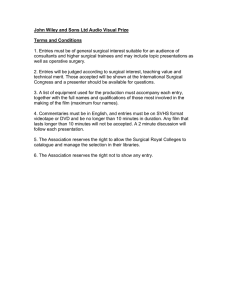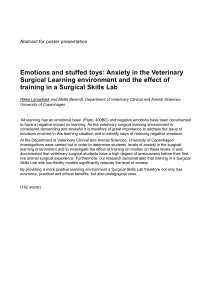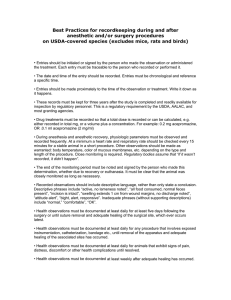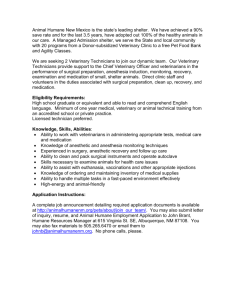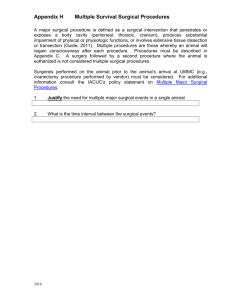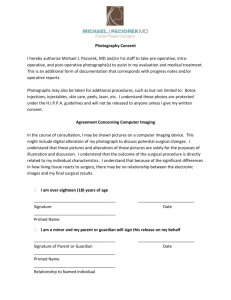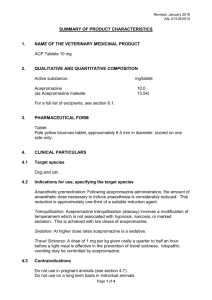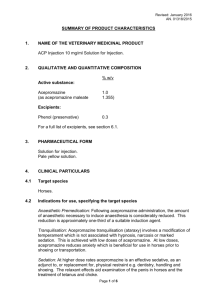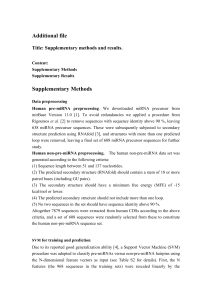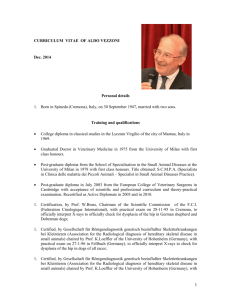policy
advertisement
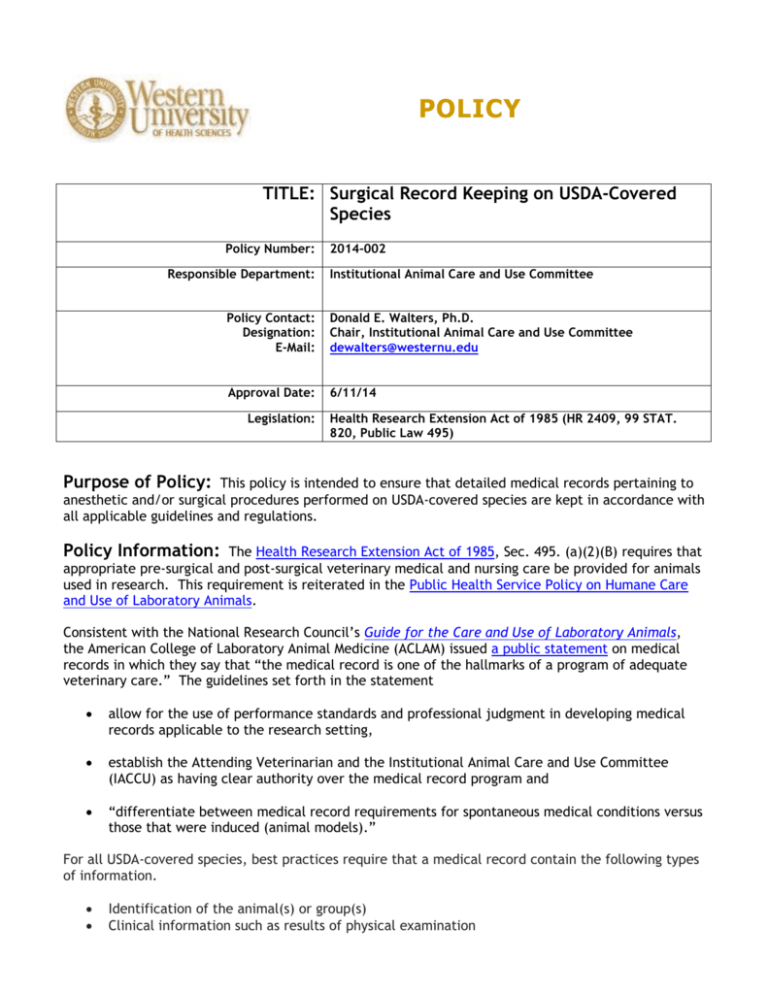
POLICY TITLE: Surgical Record Keeping on USDA-Covered Species Policy Number: Responsible Department: 2014-002 Institutional Animal Care and Use Committee Policy Contact: Designation: E-Mail: Donald E. Walters, Ph.D. Chair, Institutional Animal Care and Use Committee dewalters@westernu.edu Approval Date: 6/11/14 Legislation: Health Research Extension Act of 1985 (HR 2409, 99 STAT. 820, Public Law 495) Purpose of Policy: This policy is intended to ensure that detailed medical records pertaining to anesthetic and/or surgical procedures performed on USDA-covered species are kept in accordance with all applicable guidelines and regulations. Policy Information: The Health Research Extension Act of 1985, Sec. 495. (a)(2)(B) requires that appropriate pre-surgical and post-surgical veterinary medical and nursing care be provided for animals used in research. This requirement is reiterated in the Public Health Service Policy on Humane Care and Use of Laboratory Animals. Consistent with the National Research Council’s Guide for the Care and Use of Laboratory Animals, the American College of Laboratory Animal Medicine (ACLAM) issued a public statement on medical records in which they say that “the medical record is one of the hallmarks of a program of adequate veterinary care.” The guidelines set forth in the statement allow for the use of performance standards and professional judgment in developing medical records applicable to the research setting, establish the Attending Veterinarian and the Institutional Animal Care and Use Committee (IACCU) as having clear authority over the medical record program and “differentiate between medical record requirements for spontaneous medical conditions versus those that were induced (animal models).” For all USDA-covered species, best practices require that a medical record contain the following types of information. Identification of the animal(s) or group(s) Clinical information such as results of physical examination The behavior of the animal and notations regarding observed abnormalities, illnesses or injuries Any prophylactic treatments and procedures Reference to any research interventions Treatment prescribed and provided, the clinical response and follow up Surgery, anesthesia, analgesia and peri/post-operative care Control of pain and distress Documentation of euthanasia or other disposition Documentation of necropsy findings, if indicated Drug treatments must be recorded so that the route of administration and total dose can be determined. Example: acepromazine 0.2 mg intraperitoneally (IP) OR acepromazine 0.1 ml (2mg/ml) IP. Notations in the medical record should be made by individuals who have administered treatments, or made direct observations or evaluations of the animal(s) or their diagnostic results, or their designee. Persons responsible for making notations in the record include, but are not necessarily limited to veterinarians and/or veterinary technicians, animal husbandry staff (animal care staff, managers, supervisors) research staff (e.g., principal investigators, study directors and/or research technicians). All entries in the record should be dated and include the time of the entry, initialed or signed (written or electronic) by the originator of the entry (entries must be traceable to the person who made the entry) and legible to someone other than the writer. Entries should be made as the event happens, i.e. at or around the time of the observation or treatment. Group health records may be appropriate for animals belonging to a colony, school, flock or herd of animals. Recorded observations should include descriptive language such as active, no lameness noted all food consumed, normal feces present incision is intact swelling extends 1 cm from wound margins, no discharge noted bright, alert, responsive Avoid using phrases such as normal, comfortable and OK without supporting descriptions such as “normal feces present” above. Health observations must be documented at least daily for 5 days post-surgery or until suture removal and adequate healing of the surgical site has occurred, whichever occurs latest. daily post-surgery for procedures involving exposed instrumentation or a catheter until removal of the apparatus and adequate healing of the surgical site(s) has occurred. daily for animals that exhibit signs of pain, distress, discomfort or other health complications until resolved. weekly after adequate healing has occurred. Daily post-surgical observations should include at least observation of the comfort level of the animal as assessed by the level of activity, mental attitude, voiding, food consumption, etc. a check of surgical wounds for intactness, discharge, redness or swelling. placement of any catheters or instrumentation and their condition. Describe any procedures such as cleaning of the site or flushing of a catheter that are performed. any procedure-related observations pertaining to potential or unexpected complications such as infection, ischemia, etc. A copy or summary of the medical record for an animal or group of animals should follow the animal if it is reassigned to another investigator or to a different housing location. Medical records must be kept for three years after the study is completed and be readily available for inspection by the Institutional Animal Care and Use Committee (IACUC) and appropriate regulatory personnel as required by most granting agencies.
